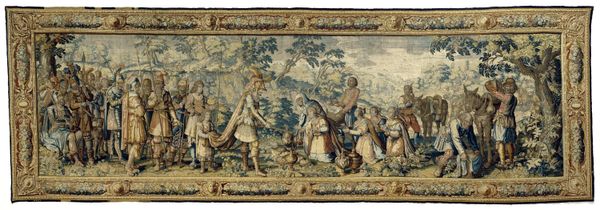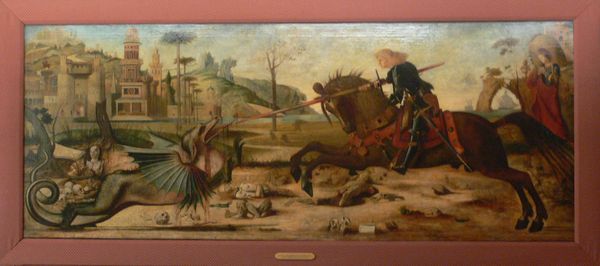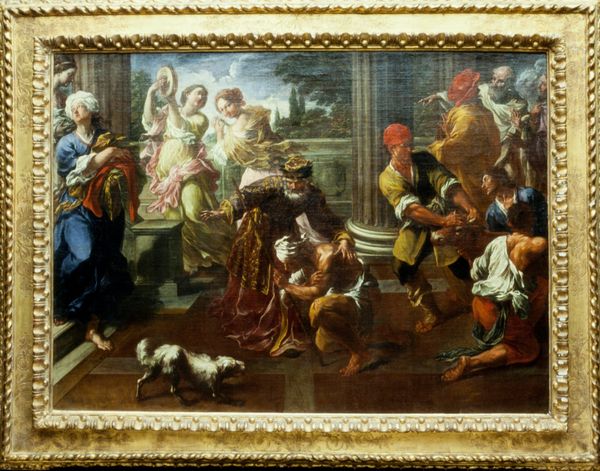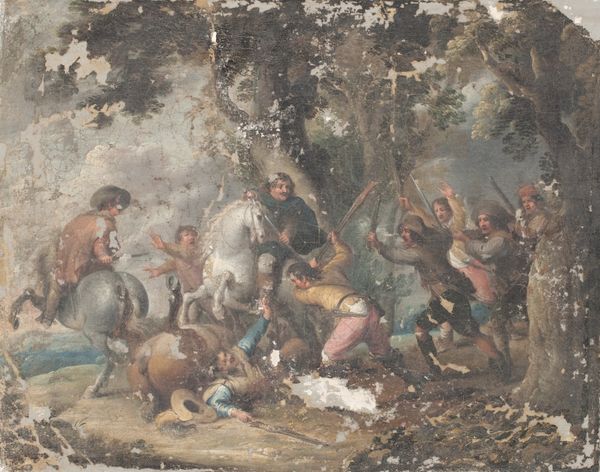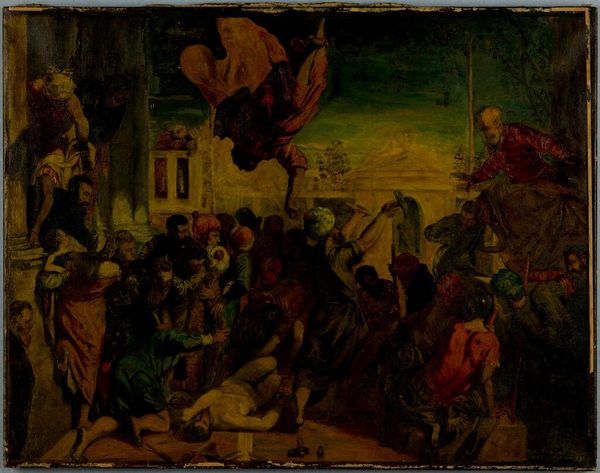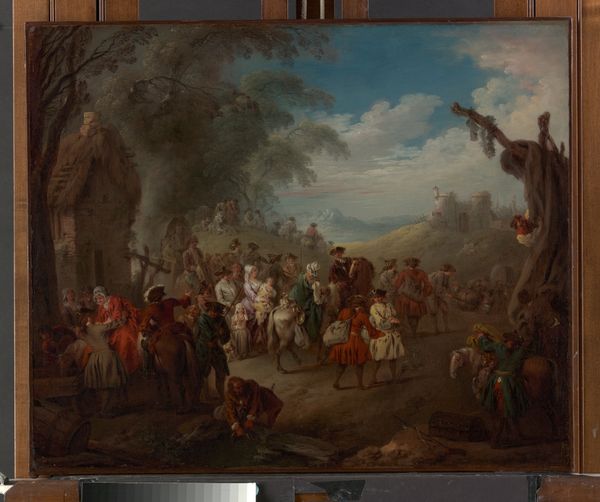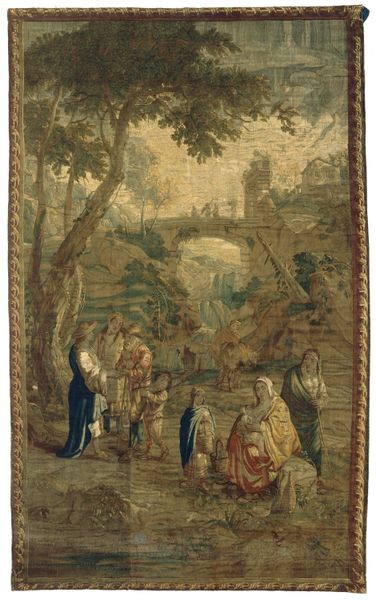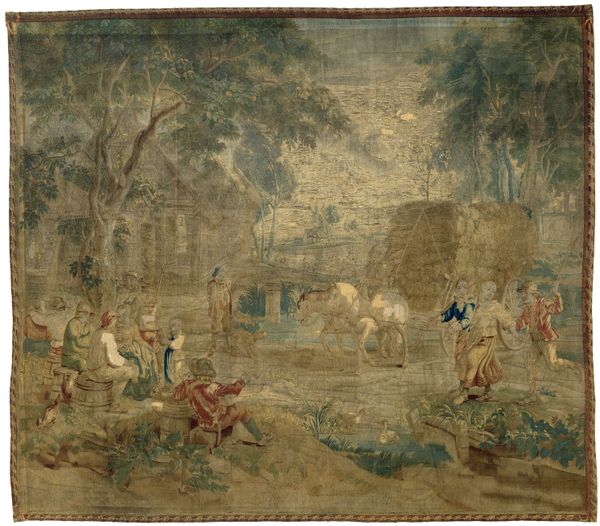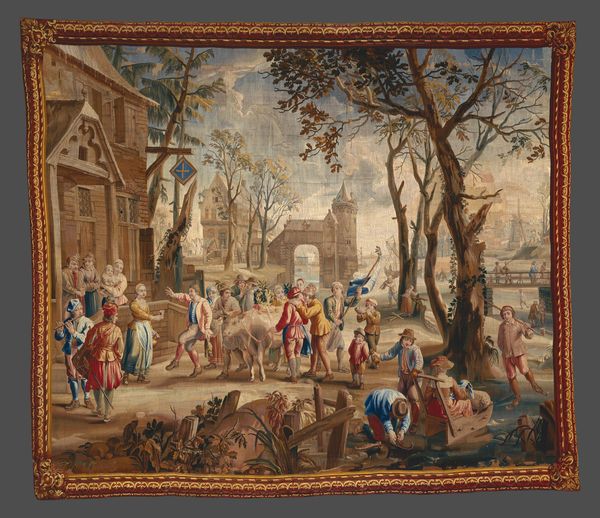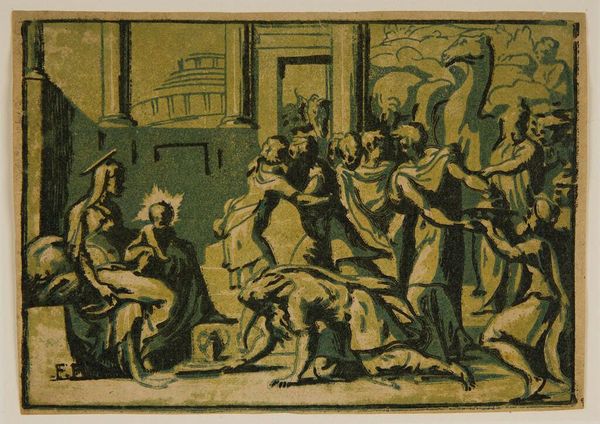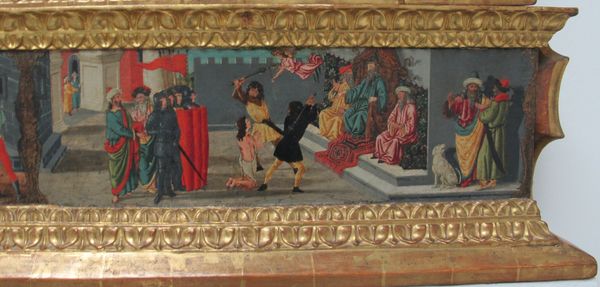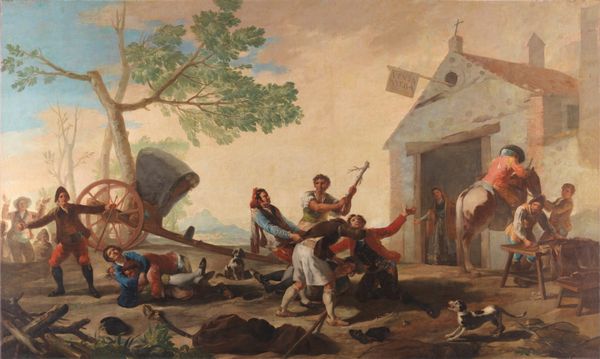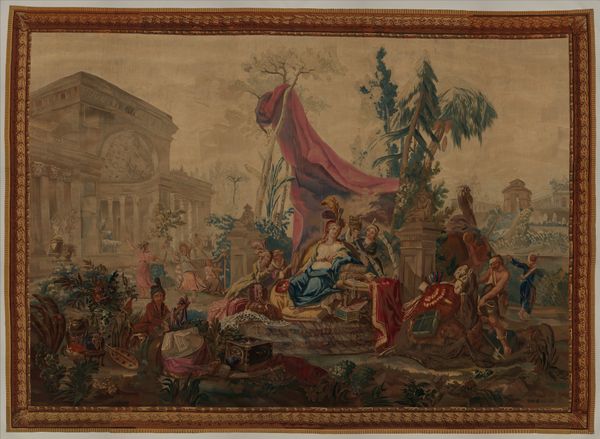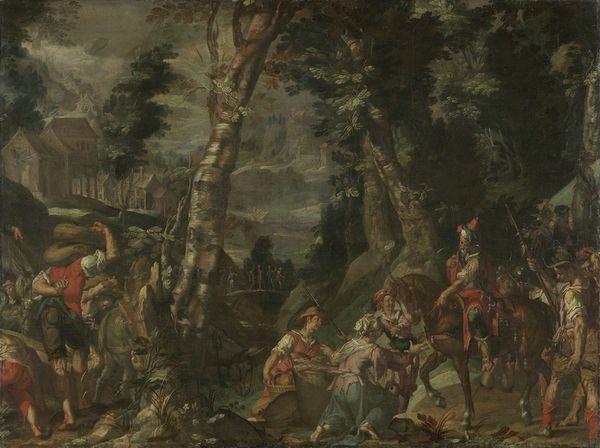
painting, oil-paint
#
baroque
#
painting
#
oil-paint
#
landscape
#
mannerism
#
figuration
#
oil painting
#
genre-painting
#
history-painting
#
realism
Copyright: Public domain
Editor: "Peasants Fighting with Soldiers" by Pieter Brueghel the Younger... It's rendered in oil paint and strikes me as quite chaotic, figures flailing everywhere. What sort of story do you think it tells? Curator: I see a brutal condensation of communal trauma. Consider the cart: isn’t it striking how its prominent placement obscures the background? This veiling acts as a symbol for a kind of repression. There is something we are *not* being allowed to see. What does that cart conceal, not just physically but symbolically? Editor: I guess it makes sense, the way it separates the idyllic landscape from the harsh reality of the fight. So you’re suggesting that the landscape *is* important and adds to the painting’s meaning? Curator: The landscape always speaks. In these kinds of paintings, nature serves as a constant witness to human folly. Brueghel isn't just documenting a brawl, but layering meaning. Think about what this meant to people, viewing these scenarios of the fight. Is it mere observation or incitement? The people, how might they have experienced it? Editor: Incitement? That's a provocative thought. Maybe these images gave a visual language to express everyday resentments and keep those feelings alive. Curator: Exactly! These images often tap into something buried, using established iconography to speak volumes. This violence, filtered through recognizable types, allowed for complex emotional and social responses. A reminder that even mundane scenes carried weighty significance for those who first encountered them. Editor: So, more than just illustrating history, Brueghel uses recognizable images and symbols to connect viewers with deeper feelings about power and oppression. Fascinating. Curator: Indeed. A single glance unveils layers of meaning, reminding us that every image is a potent carrier of memory and cultural continuity.
Comments
No comments
Be the first to comment and join the conversation on the ultimate creative platform.
